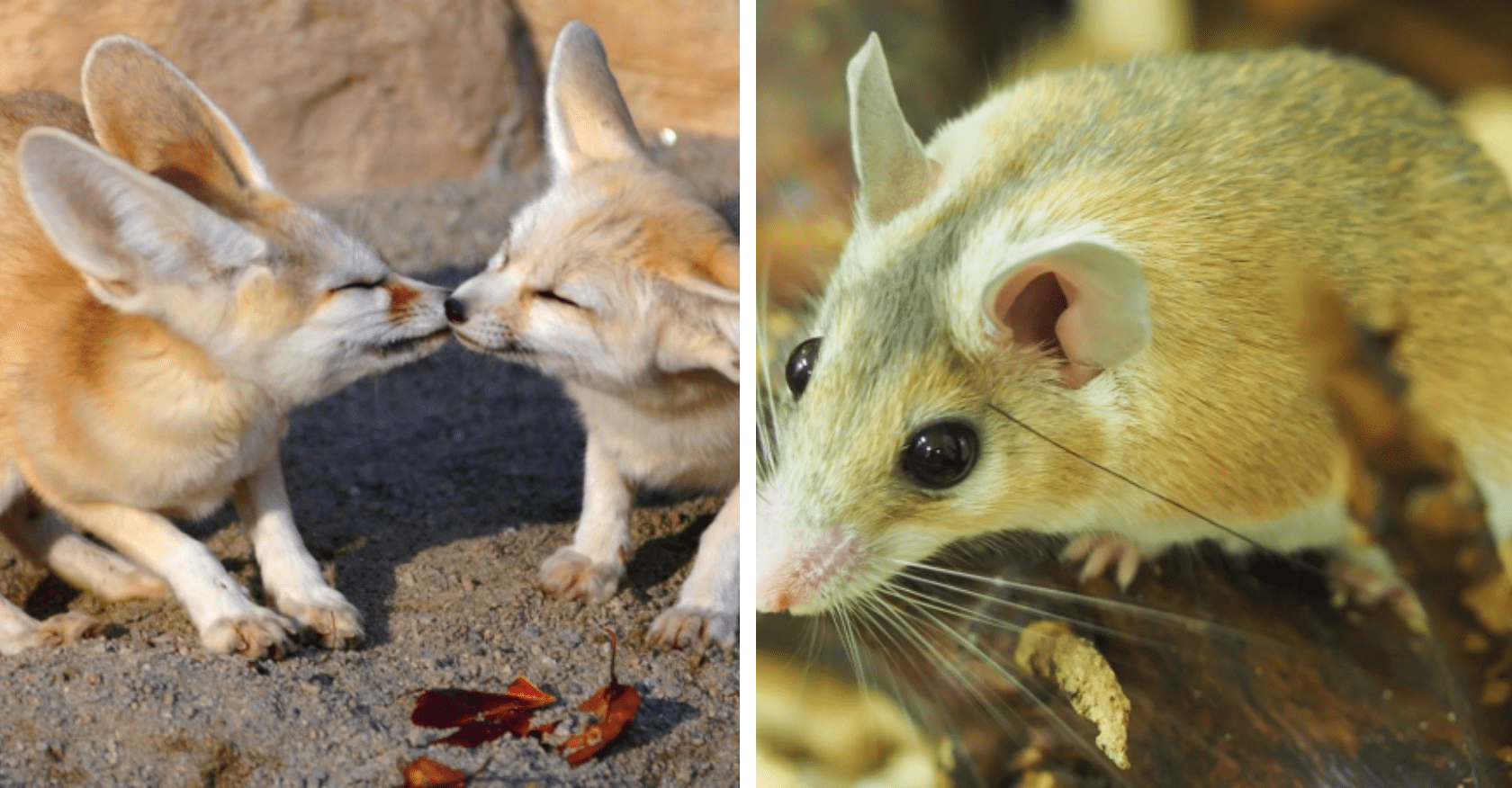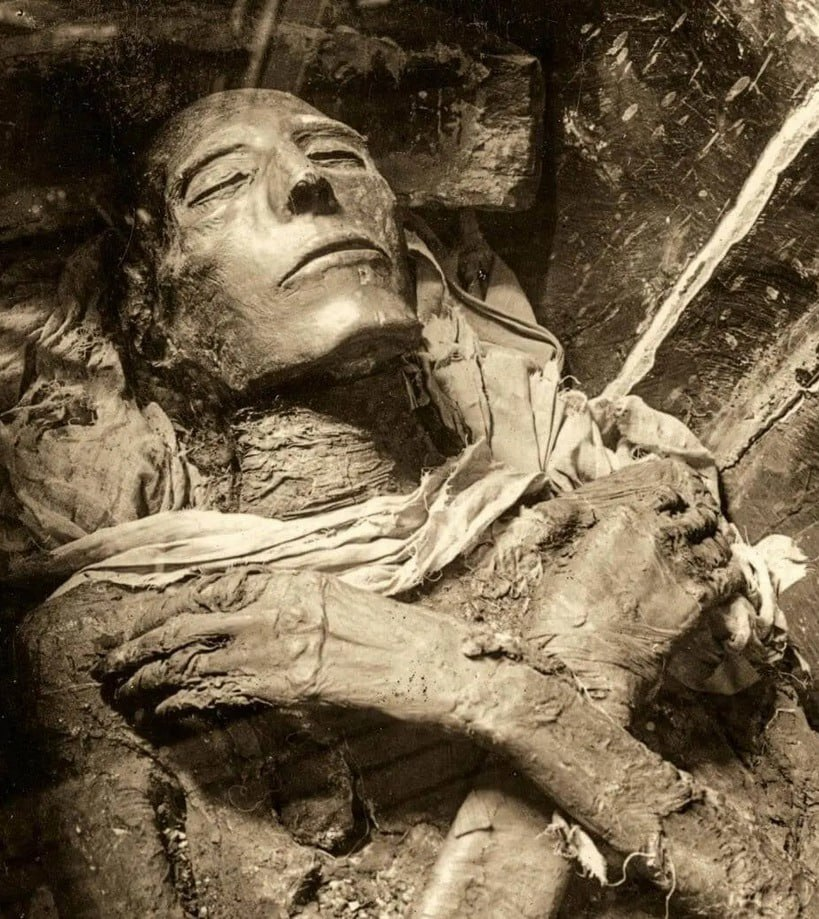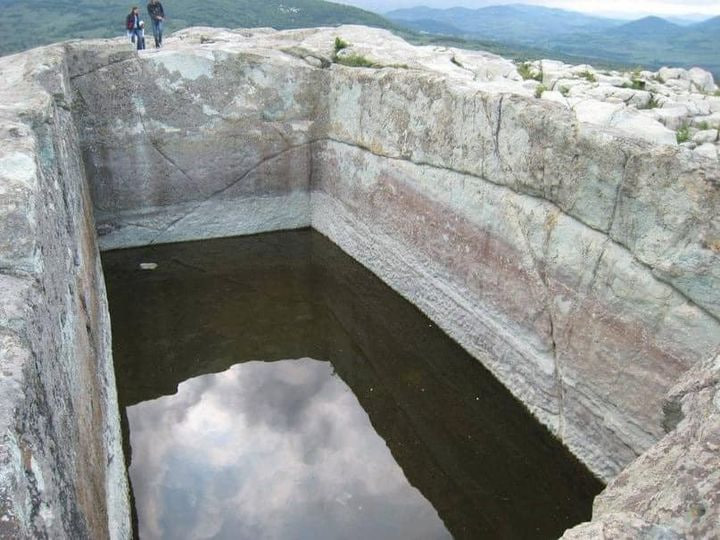Nocturnal feeding is an animal behavior characterized by nocturnal activity, mainly by sleeping during the day as this reduces the risk of predation, or by excessive daytime temperatures and competition. of other animals. Among the hundreds of species of nocturnal animals, there are many beautiful-looking animals. Let's find out with Toplist!
Spiny Mouse Cairo
While the Cairo spiny rat is only active at night, its close counterpart - the yellow spiny rat - is only active during the day. What makes this so unusual is that these two mice are physiologically similar, and the fact that they often occupy the same ecosystem and hunt for the same prey – albeit at different times of the day. These mice rely on their strong sense of smell and hearing to navigate in the dark, but they are also aided by hairs near their nose and mouth that can be used to detect objects in the dark. Whether out at night or during the day, their spiky coat makes them an unpalatable meal for many predators.
The Cairo Spiny Rat is native to northern Africa with their range extending from Mauritania, Morocco, and Algeria in the west to Sudan, Ethiopia, Eritrea, and Egypt in the east at elevations up to about 1,500 m (4,900 ft). ft). It lives in dry rock habitats with sparse vegetation and is often found near human habitation. It is common around cliffs and canyons and in gravel plains with shrub vegetation. It is not commonly found in sandy habitats, but can occur among date palms.
Cairo Spiny Rats are social animals and live in groups with a dominant male. Spawning occurs mainly in the rainy season, between September and April, when food is more readily available. The gestation period is 5 to 6 weeks, long for mice, and the pups develop well when they are born. By this time, they are already covered with short fur and their eyes are open, and they will soon begin to explore their surroundings. The adults in the group co-operated with the young, with the lactating females feeding the females in the group. Females can become pregnant again shortly after birth and give birth to three or four litters of up to five pups in a year. Juveniles mature between two and three months of age.
Spiny Cairo rats live in burrows or rock crevices and are mainly terrestrial, but they can also burrow in low bushes. They are nocturnal and omnivorous, eating anything that can be eaten. Their diet consists of seeds, nuts, fruits, green leaves, insects, spiders, mollusks and carcasses. When living near humans, they consume crops, grains and food reserves. They sometimes invade homes, especially in winter, and don't like cold weather.
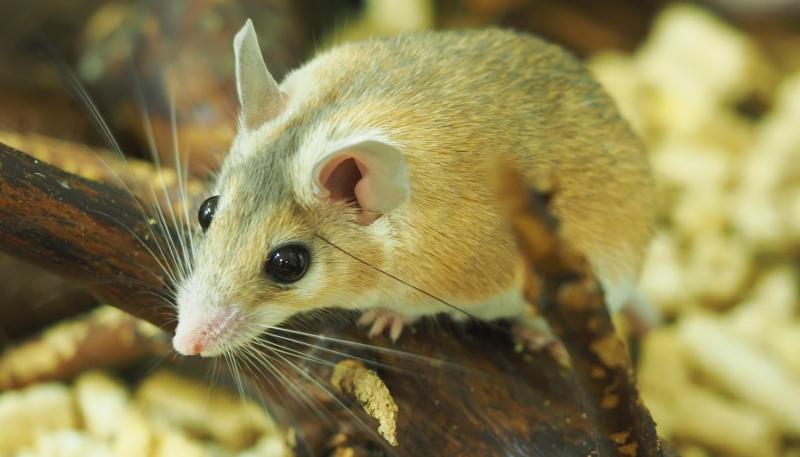
Spiny Mouse Cairo
Black-legged weasel
The black-footed ferret is roughly the size of a weasel and differs from the European Polecat by the greater contrast between the dark limbs and pale body and the shorter black tip-tail length. In contrast, the difference between the black-footed ferret and the Asian polecat is so slight that the two species were once thought to be specific. The only notable differences between the black-footed ferret and the prairie polecat are the much shorter and coarser coat, larger ears, and a longer extended posterior palate.
It is mainly nocturnal and solitary, except when breeding or brooding. Up to 91% of its diet is prairie dogs.
The black-footed ferret was on the verge of extinction in 1980, and its current populations exist because of re-establishment in their native habitat. Thanks to successful captivity, several hundred individuals were born in captivity and 500 individuals (206 adults) were released into the wild. The re-release of a small group in 1991 into Wyoming's Shirley Basin.
In the spring of 2008, there were about 500 adults spawning in the wild, fewer than 250 of which were born in the wild. The estimated number of breeding adults increased to 448 in 2009, but fell to 274 in 2012 and similarly in 2015, at 295. The estimated overall population decline from 2008 to 2015 is about 40%. Of these, 206 adults occurred in free-living and self-sustaining populations. These minimum population estimates occur in the spring.
The black-legged ferret has an elongated body with black outlines such as the paws, ears, parts of the face and tail. The forehead is curved and wide, the muzzle is short. It has few whiskers, and its ears are triangular, short, erect, and broad at the base. The neck is long, the legs are short and stout. The toes are equipped with sharp, slightly curved claws. The paws on both surfaces are covered with hair, even up to the soles of the feet, thus hiding the claws.
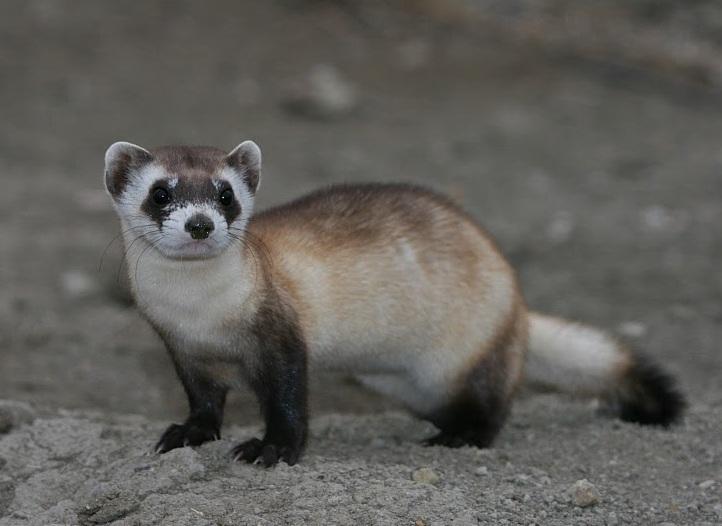
Black-legged weasel
Fennec fox
The fennec fox's small size and endearing features make it one of the desert's loveliest animals, but you'll only find it if you venture out at night. The biggest threat to fennec foxes are daytime predators such as hawks and hyenas, and so these adorable animals congregate in burrows under the sand at night. These underground dwellings also keep them safe from the harsh desert heat, and they only venture out to hunt on the ground when the night - and the temperature - drops. As omnivores, their evening hunts can lead them to insects or rodents as easily as fruits, plants, and roots.
Fennec foxes are very faithful, they live in a monogamous regime, giving birth to about 2 to 5 cubs each year. The cubs can stay with their parents even after the babies are born. When the Fennec fox is pregnant and nursing, its mate will feed, pamper and protect it.
Fennec foxes are highly social, living in groups of about 10 members. Groups of more or less members are determined by the amount of food resources available in the territory they inhabit. When in danger, this animal makes various sounds such as barking, hissing (like a cat) and growling. They have no need to drink water. Fennec foxes can live without drinking water, instead, they get water from leaves, tubers, fruits and even their prey.
Fennec fox loves the nightlife. Like so many other desert animals, the Fennec fox prefers nocturnal activity, avoiding the excruciating heat of the desert during the day. During the day, the Fennec fox spends a lot of time sleeping, storing maximum energy for the night hunting and playing. The harsh habitat causes the Fennec Fox to dig burrows in the sand in areas with stable trees and dunes. The area of these caves can be up to 120m2 and up to 15 different entrances. In some cases, they live near members of the same bloodline, Foxes will dig burrows with each other.
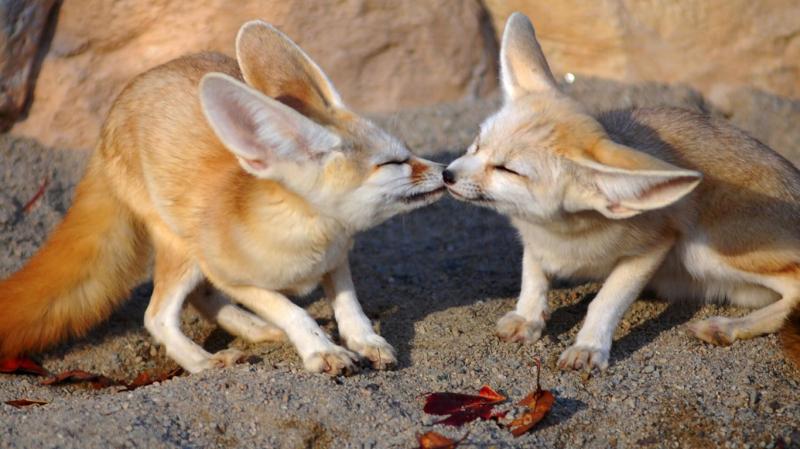
Fennec fox
Dwarf monkey Tarsiidae
Many nocturnal creatures include tarsiers, some owls with large eyes relative to their body size to compensate for lower light levels during the night.
The Tarsiidae are a suborder or suborder of Primates that includes a group of primates whose ranges once varied across Europe, North Africa, Asia, and North America, with most of them today. extinct, only living species are found in the islands of Southeast Asia. Tropics or Tarsier Monkeys (Family Tarsiidae) are the only living members of this suborder.
Other fossil primates, which include Microchoeridae, Carpolestidae, and Simuliidae, have been included in this classification, although the fossil evidence is controversial. Simuliidae is also classified under the Simiiformes infraorder (with monkeys and apes). Likewise, Carpolestidae are often classified in the order plesiadapiformes, the very close, relatively extinct species of primates. This contradictory classification lies at the heart of the primate evolution debate.
Even the placement of Tarsiiformes in the suborder Haplorhini (with apes and apes") is disputed.In general, accepted members of this infraorder include the living tarsier, omomyids extinct, two extinct fossil genera, and two extinct fossil species in the genus tarsius.Like haplorhines, they are more closely related to monkeys and lemurs than strepsirrhine primates, which include lemurs, galagos, and lorises.
Tarsier monkeys have some unusual morphological features. Their ancestors lost the tapetum lucidum layer, which reflects and amplifies light. So, to make up for this shortcoming, Tarsier had to develop bigger eyes, almost as big as their brains, allowing them to see well at night, because the eyes were so big they couldn't see through. , but you have to turn your head if you want to see something on either side. They rotate their heads similar to owls and can rotate their heads 360 degrees.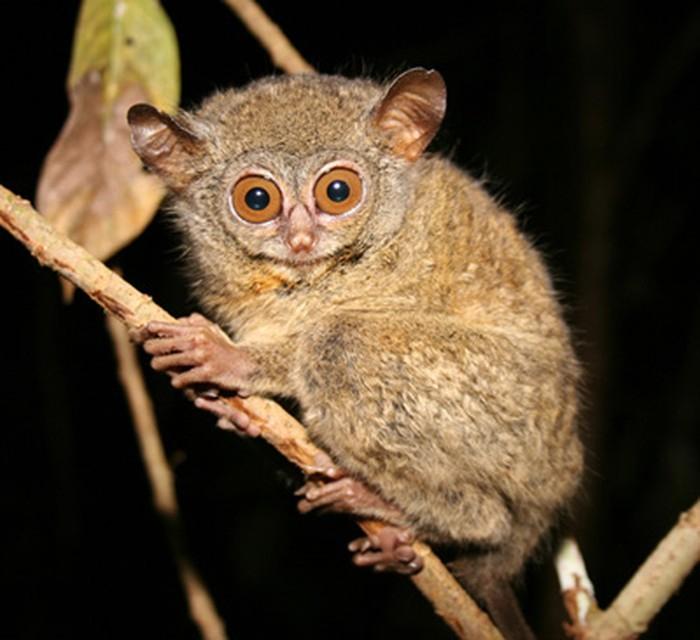 Dwarf monkey Tarsiidae
Dwarf monkey Tarsiidae
It's coming
The life of a pangolin is a solitary life – as they spend most of their lives in underground burrows. They spend the night expanding their impromptu burrow network and hunting for insects with their long tongues and keen sense of smell. Although there are eight different species of pangolin around the world, they are all united by the unique armored scales that cover their bodies. Unfortunately, this animal is considered a delicacy in many places and has been pushed to the brink of extinction by poachers.
The whole body of the pangolin is covered with hard scales, overlapping like scales, leaving only the abdomen. At birth, pangolin scales are soft but gradually harden as they mature. They are made of keratin, the same material as human fingernails and long, hard claws, and have a different structure and composition from reptile scales. The body surface is scaly equivalent to a pine cone. The edge of the scale is sharp and pointed to aid in defense. It can curl up into a ball when threatened, with overlapping scales acting as armor, while it protects its face by tucking it under its tail. The scales are sharp, providing extra defense from predators. They also defend themselves by spraying a solution of foul acid from glands near the anus, similar to the spray of skunks.
Pangolins have long and hard nails; The forelimbs are used to destroy nests of foraging insects, burrow into ant and termite mounds, and to climb. Because of their long claws, they do not walk by stepping on the ground, but on the contrary, pangolins move by bending their front legs and stepping on the instep. Their mouths have no teeth; The main food is ants and termites. They use their long tongues (up to 40 cm, only 0.5 cm in diameter) with very sticky drool to capture prey. The tongue is located in the ribcage, between the sternum and the trachea.
The pangolin tail has the ability to hold, to help hold onto branches when climbing. The pangolin species measure from 30 to 100 cm. Females are usually smaller than males. They nest in hollow trees or burrow deep in the ground.
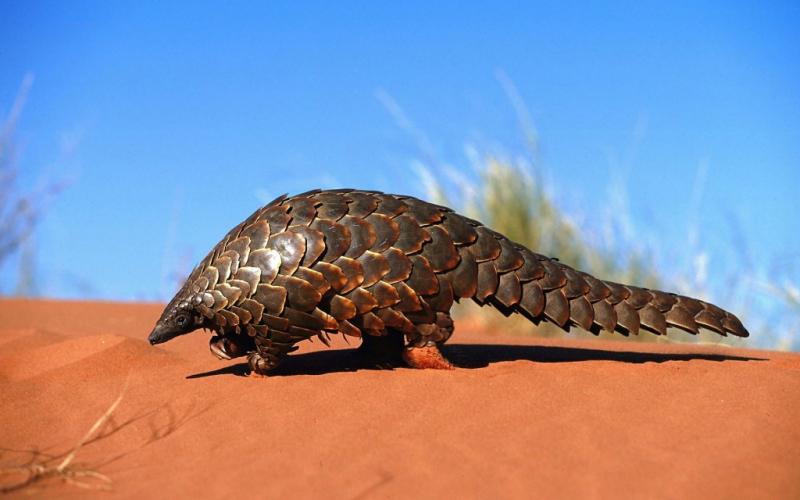
It's coming
Above are the top of the most beautiful nocturnal animals in nature today that Toplist learns and provides to readers. Follow along to know more interesting things about the animal world in the following articles.

